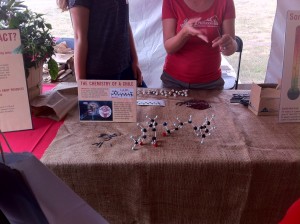Spending a couple hours looking at art can be spiritually freeing.
A week ago I did just that down in the Commons. We took a stroll on the crisp autumn day finding colorful murals everywhere. As a student, I spend most of my day indoor so it was nice to leave the campus for a break. We started the tour in a garage with some large scale spray painted murals. It was interesting to see art in places like this, where people typically do not spend much time in. Yet, once you saw a piece that you like, it completely caught your attention.
I appreciated Caleb’s explanation and description for each piece that we saw. The context of creation is vital in developing a better understanding of the work and appreciation for the artist. One interesting fact to learn was that a mural celebrating the four Indian chiefs stirred so much controversy that strawberries were added to it to wall. According to a Cherokee legend, the angry First Woman returned to her husband after seeing some luscious and sweet strawberries created by Unetlanvhi. Strawberries are a symbol of good luck and were added as a feminine representation.
Lastly, I came across a poem written by Mary Naylor and it captured the day perfectly.
Grinning pumpkins, falling leaves,
Dancing scarecrows, twirling breeze,
Color, color everywhere,
Autumn dreams are in the air! Autumn is a woman growing old,
Ready to let what is dead go,
Her youthful radiance has faded, and that’s sad,
But underneath she discovers a
spread of colors she didn’t know she had. Little children screech and run,
Ghosts and goblins having fun,
Color, color everywhere,
Autumn dreams are in the air! Around her a kaleidoscope of leaves are whirling.
Deep within her visions stir of new life that will be,
A budding, a flowering, a promise unfurling.
Autumn is a woman growing old,
Ready to let what is dead go. Calico kittens, rain falling rat-a-tat-tat,
Big full moon, funny black cats,
Color, color everywhere,
Autumn dreams are in the air!

 There was an information booth at which a lady talked about the chemical structure of capsaicin (what makes chili peppers hot) and the hotness scale. I immediately had a horrendous flashback of orgo, which I still need to study for.
There was an information booth at which a lady talked about the chemical structure of capsaicin (what makes chili peppers hot) and the hotness scale. I immediately had a horrendous flashback of orgo, which I still need to study for.